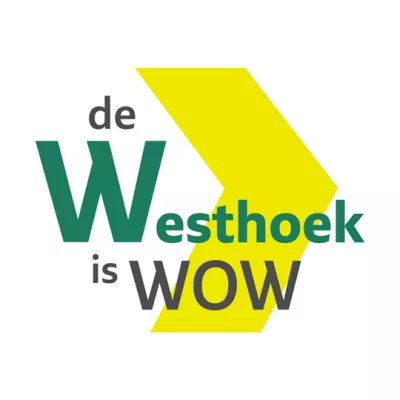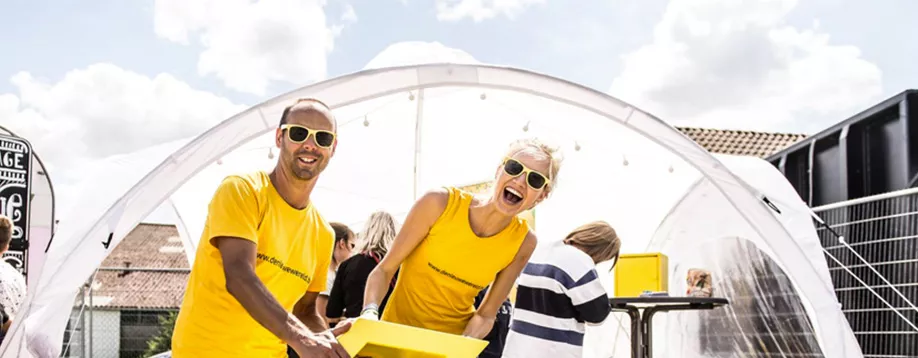General information
RDP Priority
- P6. Social inclusion and local development
RDP Focus Area
- 6B: Local development
RDP Measure
- M19: LEADER/CLLD
Beneficiary type
- Public authority / body
Summary
Like other rural areas in Europe, young and educated people from Belgium’s Westhoek region migrate to cities to live and work. To help redress this ‘brain drain’ and related depopulation pressures, an initiative called ‘Westhoek: The New World 2.0’ was launched. It was designed to motivate young people to live, work, and do business in the Westhoek.
The project uses storytelling to highlight these assets through a communication mix of online channels (such as a website, Facebook, and Instagram) and traditional media (newspapers, magazines). These stories are shared in collaboration with municipalities, companies, vloggers, bloggers, and freelancers. In 2020, the website was updated and promoted by a communication campaign via online advertising, social media, and participation in events.
Results
The project’s communication campaign resulted in:
- 23 578 website visitors (average 3 930 visitors a month);
- 1 temporary job;
- 91 video reports;
- 116 blog articles; and
- Increased followers on social media channels (2020-2022) - Facebook from 275 to 4 896 followers, and Instagram from 0 to 1 218 followers.

Promoter
Dienstverlenende Vereniging Westhoek
Funding
Total budget: 143 000 (EUR)
EAFRD: 28 600 (EUR)
National/Regional: 28 600 (EUR)
Private/own: 85 800 (EUR)
Keywords
Ressources
Documents
Good practice report : Westhoek, ‘The New World 2.0’
(PDF – 2.72 Mo)
Context
The Westhoek, like many other rural regions, is still considered at risk from depopulation problems that threaten its long-term sustainable development and resilience. Attracting young people to live and work in the area was considered a challenge that could be addressed by using communication as a rural development tool.
Communication actions could help improve understanding of regional identity and related shared visions for the future (sustainable smart - climate neutral). More information and awareness about opportunities and existing initiatives or projects in the Westhoek was also seen as useful and necessary. This could highlight the advantages of the region in terms of living, entrepreneurship, and work possibilities for young people from in and outside the region.
Objectives
The project aimed to improve the sustainable socio-economic development of the Westhoek by:
- Encouraging young people, young families, and start-up entrepreneurs (21-40 years) from the Westhoek and surrounding regions to locate in the Westhoek; and
- Maintaining and further strengthening the positive image of the Westhoek by consistent branding and promoting the area more strongly to young families as an authentic, innovative, and smart location with adequate qualities.
Activities
The Westhoek: The New World 2.0 project communication actions involved:
- Updating the website to provide an overview of all activities in the Westhoek;
- Ensuring the campaign was recognisable by developing a new ‘Yellow Arrow’ logo which is used online as well as by municipalities and brand ambassadors (at events, in the town hall/the entrance of buildings, etc.);
- Interviewing residents from 17 municipalities to provide bottom-up content for the campaign, and publishing these interviews on the website and social media (Facebook and Instagram, LinkedIn);
- Collaborating with bloggers and vloggers to boost engagement and outreach;
- Helping other brand ambassadors (especially companies) play an important role in spreading the messages; and
- Monitoring the campaign’s Key Performance Indicators (KPIs) to help steer its success.
The project fostered new partnerships with ambassadors and other partners by using paid agreements. In return they distributed promotion materials, and provided product placements or a company film. Twice a year a steering committee met, during which meetings these companies could help determine the promotional actions for the upcoming period.
Main results
Key communication campaign achievements included:
- 23 578 website visitors (average 3 930 visitors a month);
- 1 temporary job;
- 91 video reports;
- 116 blog articles; and
- Increase in followers on social media channels (2020-2022) - Facebook from 275 to 4 896 followers and Instagram from 0 to 1 218 followers.
Key lessons
- Facebook and Instagram were more effective than LinkedIn for this type of community outreach communication campaign.
- Many rural regions want to focus on regional branding. Such a project can be adapted and implemented in other rural regions to foster socio-economic growth and attract young talent.
Regional marketing takes a lot of time to involve everyone in the project and to help the many partners spread the message. It requires a continuous commitment of people and resources.
Contact Information
Email: Steven.damman@dvvwesthoek.be
